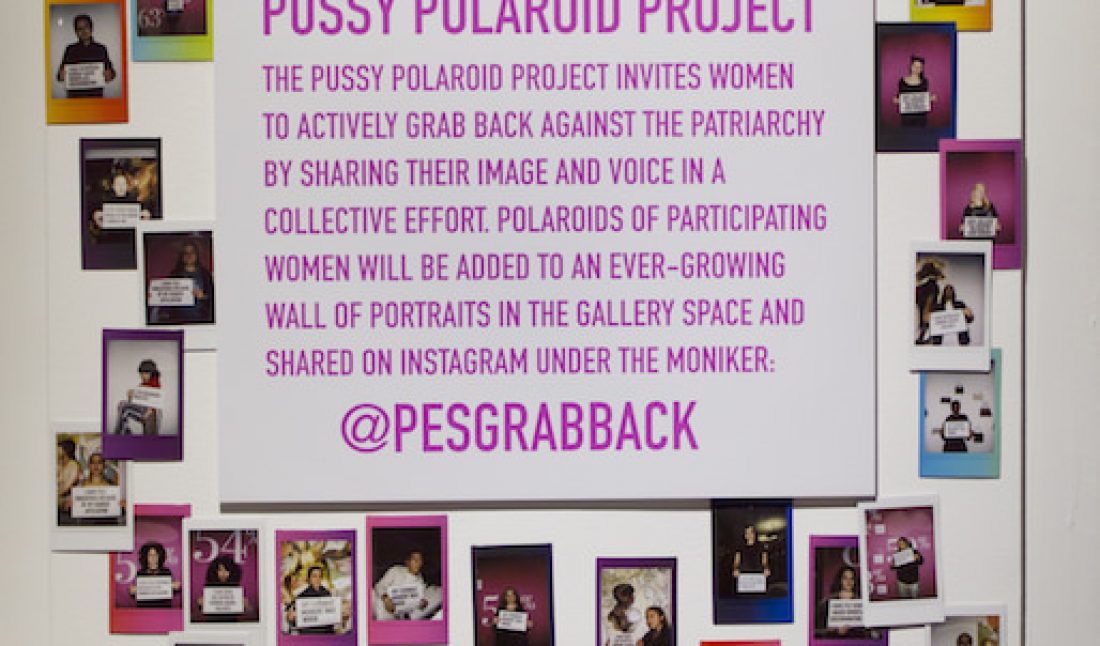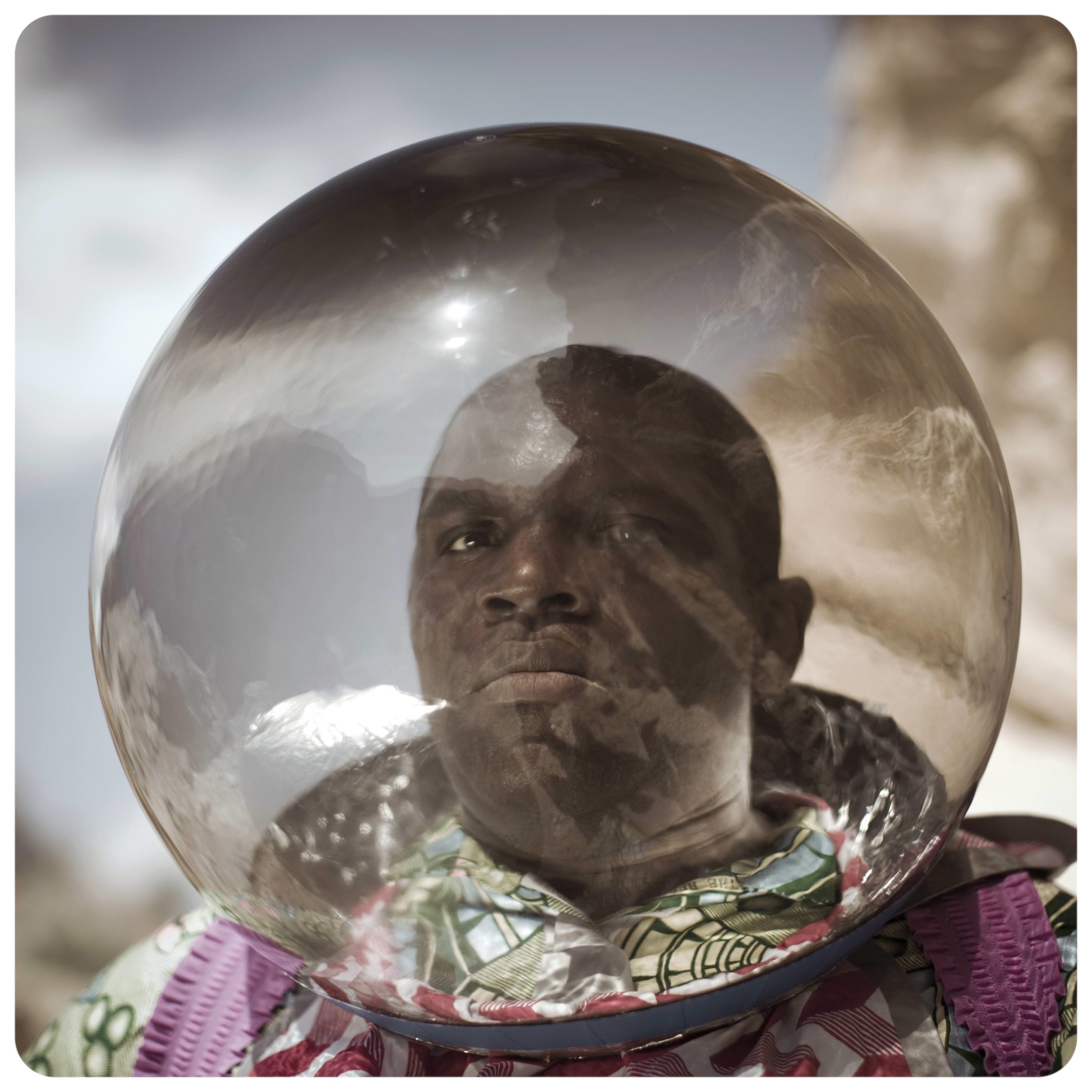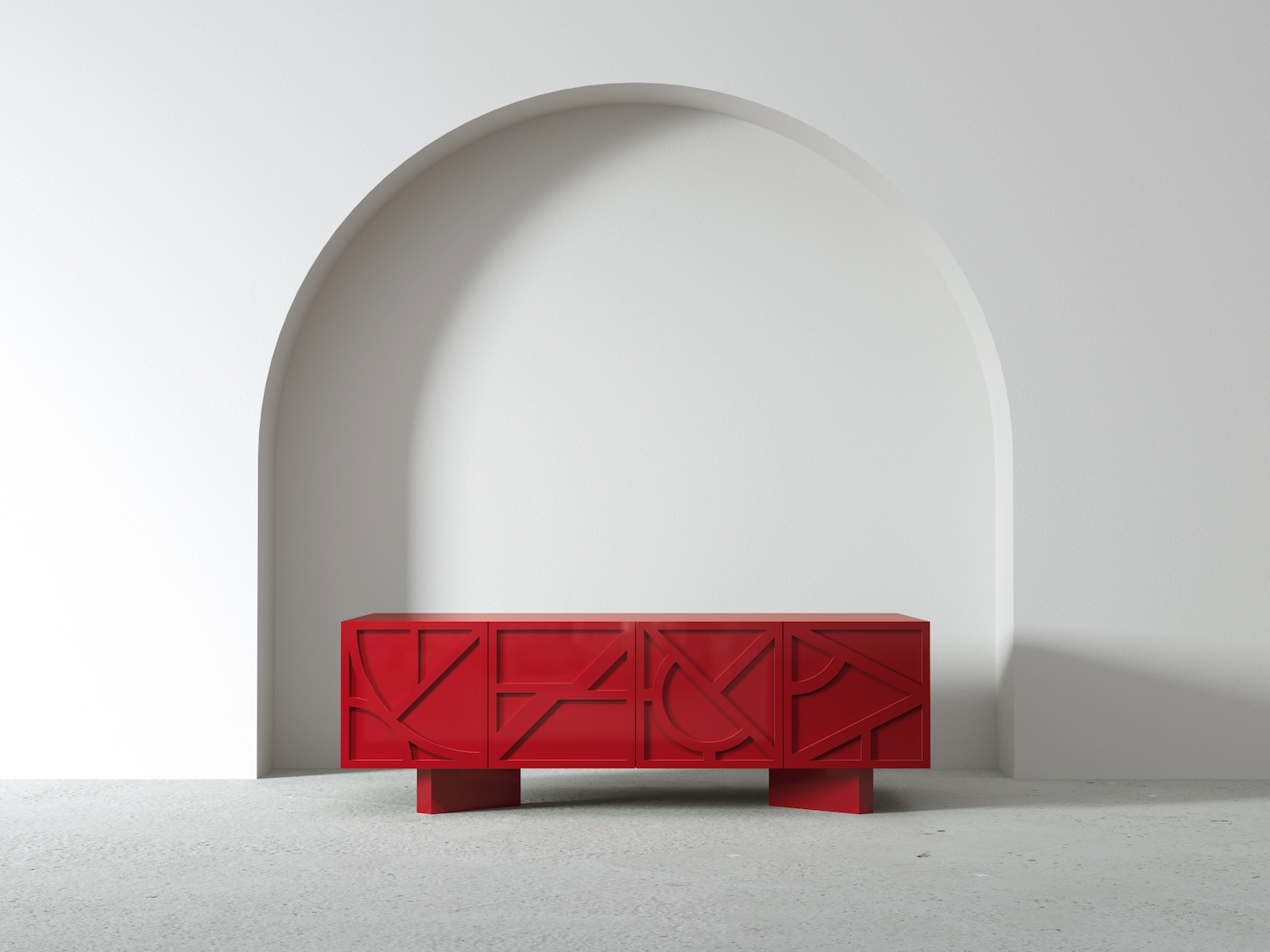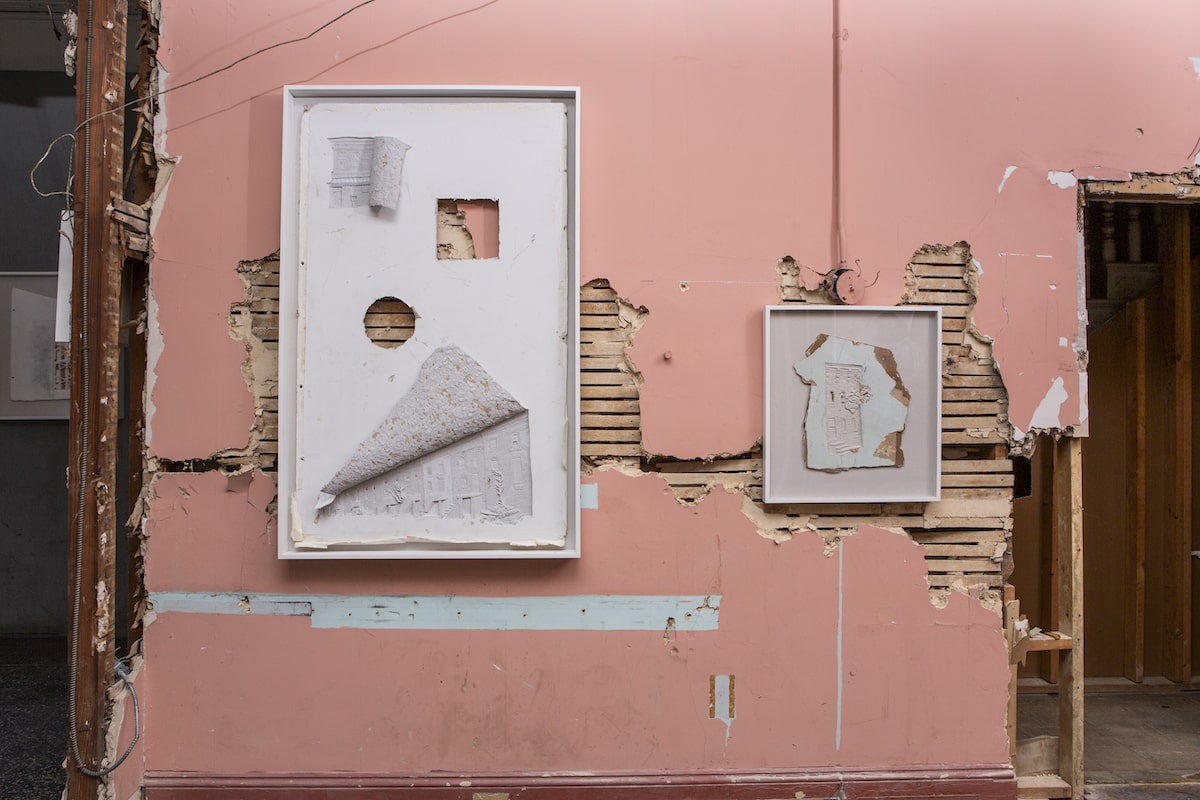Jasmine Wahi is a founder and director of Project for Empty Space (PES) and the co-director of Gateway Project Spaces in Newark, NJ. She began her career working with a focus on South Asian artists, before starting PES in 2010, a then nomadic organization that connected un-utilized urban sites with artists of interdisciplinary social practices to engage with local communities. Three years later, partnering with Rebecca Jampol, PES found a permanent home at Gateway. There, among commercially rented studios, Wahi has fostered an exhibition site and annual residency program that hosts shows like the current “GRAB BACK: PES Feminist Incubator Space,” running through June 1.
Phase one of the impromptu program includes projects by artists Angela Fraleigh and Michele Pred (up until Febraury 18), as well as a Feminist Reading Lounge, short-term residences, and—perhaps our favorite—the Pussy Polaroid Project (follow @pesgrabback on Instagram).
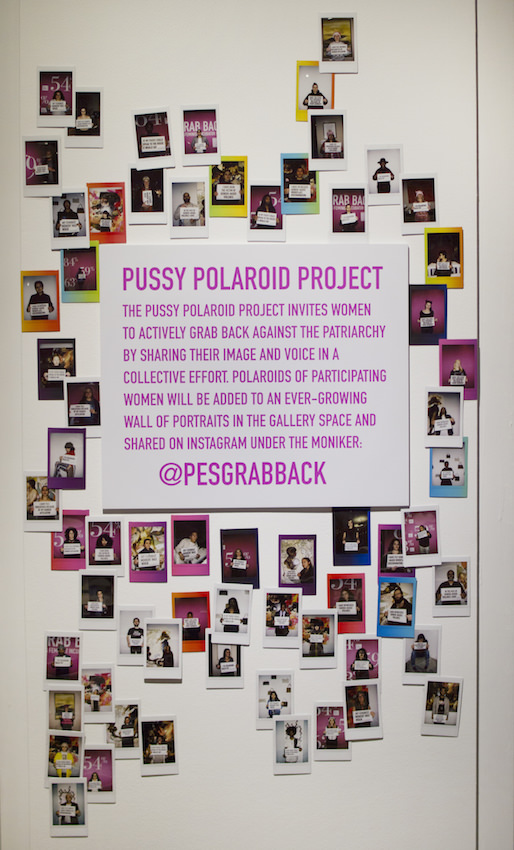 Jasmine Wahi and Rebecca Jampol’s “The Pussy Polaroid Project”
Jasmine Wahi and Rebecca Jampol’s “The Pussy Polaroid Project”
At the heart of Wahi’s practice has always been a concern for issues of identity and intersectionality, dialoguing with community, and female empowerment. For The Ascent, we spoke with her over the holidays as she was putting together the feminist incubator in reaction to the election, as well as organizing a caravan to Washignton D.C. for last weekend’s Women’s March on Washington.
WHITEWALL: What role did art play in your life early on?
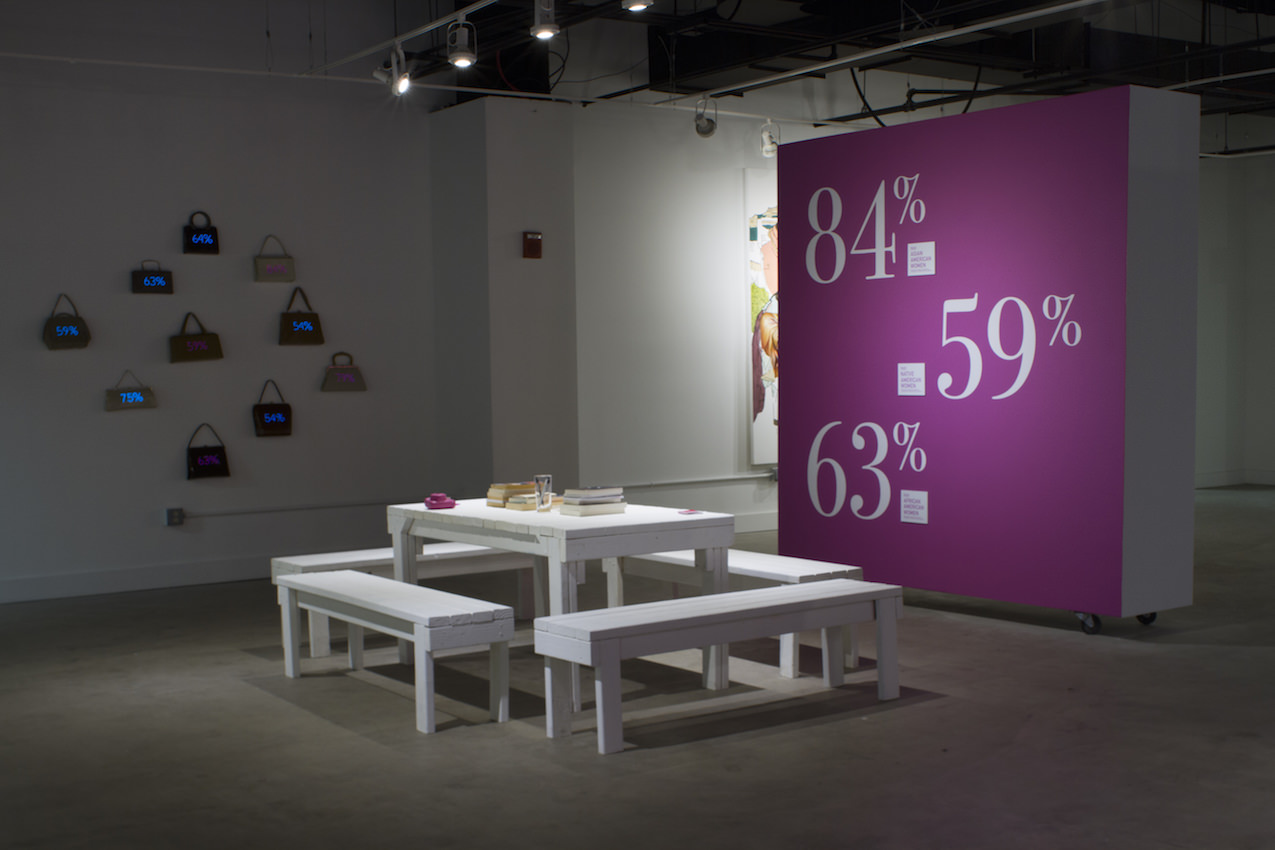 Installation view of “GRAB BACK: PES Feminist Incubator Space”
Installation view of “GRAB BACK: PES Feminist Incubator Space”
JASMINE WAHI: I originally was making art when I was much younger and sort of faux-curating as a child. I grew up in D.C. for most of my childhood and my aunt was working in the Smithsonian as a curator. It’s always been a part of my life. It was really the only thing that excited me in school. At some point I lost interest in making objects and became interested in art history and being more creative with other people’s work and constructing shows. I went into undergrad with that in mind.
I wasn’t really that interested in contemporary at first, I was interested in South Asian antiquities, specifically miniatures. I was midway through undergrad, interning at Christie’s, and that’s when I was introduced to contemporary South Asian art. That lead to this stronger interest in seeing what women in the contemporary South Asian movement were doing both on the subcontinent, and here in the U.S. and in the diaspora. I’m part of the diaspora—my parents came to this country in the seventies and I was born and raised here. That interest broadened over time into an interest in what women of color are doing. There is no dialogue about it in the traditional canon and there’s very little discourse outside of that, so I seeing that lack has just pushed me to try and investigate and expose that.
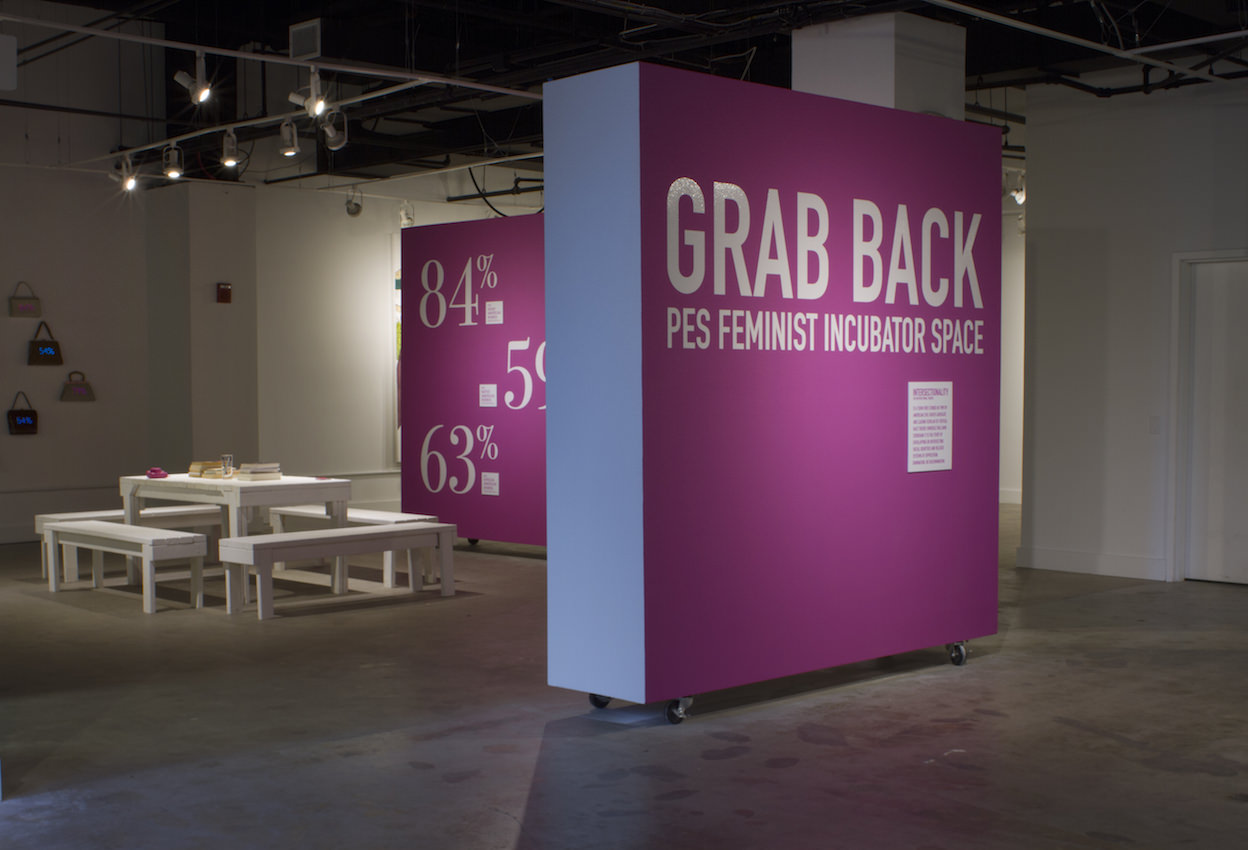 Installation view of “GRAB BACK: PES Feminist Incubator Space”
Installation view of “GRAB BACK: PES Feminist Incubator Space”
I’m really interested in intersectionality. I think looking at women of color as just women, or just people of color, is not really the full scope of our place in the world.
WW: So from the beginning, the work of women artists has really been a focus for you, something you were drawn to as a curator?
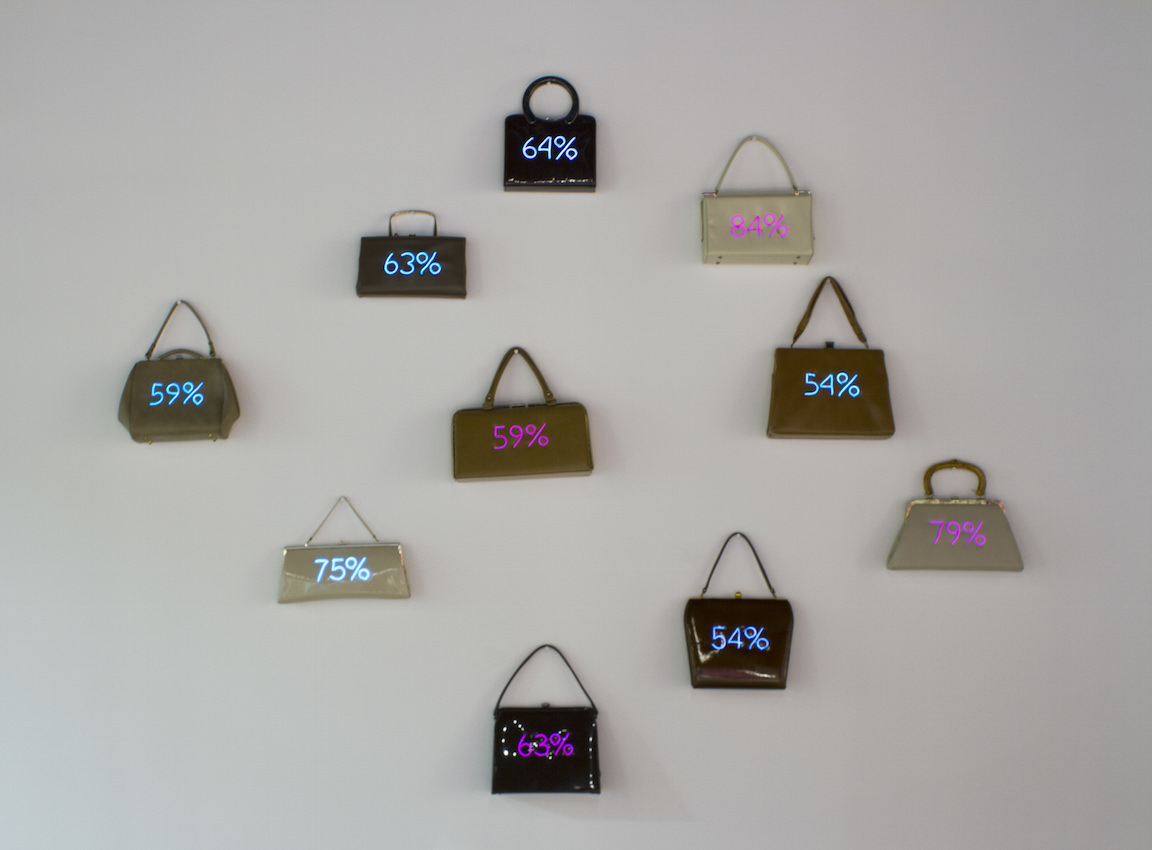 Wage Gaps by Michele Pred.
Wage Gaps by Michele Pred.
JW: Yeah, I’m not really sure why. I guess it’s something that was subtly engrained in me. I’ve always been surrounded by non-traditional, strong women.
And I’ve always had this activist side to me, for a variety of personal reasons. Crimes against women, particularly sex crimes and violence against women, have always been something that I’ve wanted to bring attention to. And so over the years, that interest or activism has merged more and more with my practice as a curator.
WW: If not from her own experience, every woman knows another woman who has experienced sexual assault.
JW: And it’s sort of unnoticed. That has always been an underlying discussion with my mother, and some of our female family members, about this rampant patriarchal and violent culture, and the normalcy of violence against women among so many cultures. It’s so hard to fight against things that are sewn into the cultural fabric of a place.
WW: So was part of your practice finding women who dealt with that issue in their work?
JW: I have actively sought out working with women who are speaking to that. People acknowledging that it exists is a form of resistance and activism. I’ve worked with artists who are proposing more blatant ways of making a change. The first show, and the only show that I’ve done so far on the subcontinent, dealt with violence and sexuality, where women were violent and hyper sexual as a form of subversive pushback [“And The Falcon Passed Through His Neck ” at Gallery Latitude]. It was a hard show and people reacted badly to it. Not because there was a shock value, but because the people attending the show didn’t really think it existed. Or they didn’t want to acknowledge that it was a part of the culture.
That’s probably why I started doing even more shows in this realm, addressing ideas because refusing to acknowledge that it is such a prominent issue is part of the problem.
WW: When I first met you, it was with Project for Empty Space, which you co-founded with Meenakshi Thirukode. It was pretty soon after the recession, and the two of you had the idea to work with artists to create exhibitions in vacant lots and unused commercial spaces due to the slow down of development in New York. Can you tell me about how that all began?
JW: When it first started out we never planned on it being an organization. It was a one-off project that, like you said, was a response to the circumstances of the recession. There were so many spaces for artists who could be making work for communities and with communities. We were very naïve about it. We actually called 311 [laughs], but they connected us with the Department of Housing and Preservation, and they said, “We have these outdoor spaces that we can’t use because the codes have changed,” and they let us lease property kind of indefinitely.
For us, it was really important to acknowledge the histories of certain neighborhoods and how they were changing—ideas of migration and shift, which are hyper-exaggerated in New York. That project was really successful and we were supposed to be there for three months, but the neighborhood enjoyed it, and that turned into a year. We decided to formalize it and make it into an organization that was dually giving artists a place to speak about important social issues, while also creating these exhibitions to cultivate dialogue within the communities.
That has become more specific and nuanced in that we’re really trying to look at issues around identity, and intersectional identity, to give artists opportunities to create room for different social dialogues and discourses. We use the artwork and the artist vision as a catalyst to have some of those conversations.
WW: And so Project for Empty Space has found a permanent home at Gateway in Newark.
JW: Gateway is our brick and mortar space. Project for Empty Space has become less about filling a geographical or physical empty space and more conceptually about filling this void of conversation.
WW: You now have an artist residence program, with people like Derrick Adams, Nina Chanel Abney, Rashaad Newsome, Wardell Milan…can you tell me about that and your early 2017 last-minute program that’s a feminist response to the election?
JW: It’s a year-long residency in which an artist can pick a topic or topics that they would like to address through a specific project and they have a studio for a year. Then they do a solo exhibition at the end of the residency. We have three artists every six months, so two cycles each year.
This January we are doing a mini residency called the “Grab Back” studio. We decided last minute to do a Feminist Incubator Space for the first three months of the year. Part of that is going to be a residency program for four female artists of any discipline to create work at the space. And then we’ll have rotating programs including a giant caravan down to D.C. for the Women’s March.
We will be doing different projects, talks, and programs all around women’s safety and agency and a “grab back” against the heightened normalization of misogyny. Both Rebecca and I, and I guess everyone, know that this climate has pretty much always existed, but there is so much media attention on it now, it seems like a perfect time to perpetuate the conversation.
WW: In early December, you threw a Winter Bacchanal Benefit and honored curators Rocío Aranda-Alvarado, Deana Haggag, and Rujeko Hockley for their commitment to cultivating social dialogue. Why did you want to highlight the work of female curators this way?
JW: This was our first year, and we’ve since decided that we’re going to honor women every year. Because, as you know, it’s not really a level playing field. Women are doing amazing work that often goes unrecognized. I think some of the best work comes from women, maybe I’m biased [laughs].
WW: I’m with you!
JW: We think it’s important to highlight and acknowledge women. Our entire mission, and my mission in life, is that art both reflects and prompts social change. It’s important that we acknowledge people who are doing that.
WW: It’s telling to me that one of the first shows you did had such a visceral, negative reaction. And that instead of never pushing those buttons again, you were propelled to keep making work that opened up conversations around women, however difficult.
JW: I remember the gallery got an email that they passed on to me. It was from a woman who said she didn’t understand the point of this show. I’m paraphrasing but she said, “Why do you think women need to be empowered in this a gross and disgusting way?” That it was an empowerment that we don’t need. I’m stubborn and in the aftermath, I was like, I’m going to do the opposite. I’m going to do every thing she said was wrong to do.
I think it was right after that I did the show “The Least Orthodox Goddess” which has now turned into a series of more playful shows, in which I pick an adjective that’s usually used to describe women, a word like “fabulous,” and I pick work that speaks to that adjective in a defiant or subversive way.
WW: Well, I’m excited to see what comes from the feminist incubator space. At the start of 2017, it’s feeling needed. I think we will keep seeing artists creating work in reaction to the incoming administration.
JW: I’ll say this for our upcoming president—the one thing I’m thankful for, from a personal and Project for Empty Space standpoint, his demagoguery has been a gift in that it’s brought people out of the closet. And when you bring things out into the open, you can actually discuss them and combat them and acknowledge them. The more we stick our heads in the sand, the more these issues and inequities are perpetuated because we deny they exist.
We’ve brushed these egregious personalities under the table, but we can no longer avoid them. That’s the silver lining I guess. I hope these types of conversations are much more public and much more uncomfortable than they have been in the past. And I hope we can have them with an audience that is not our own group of friends and peers and professionals.






